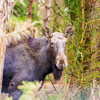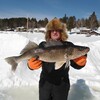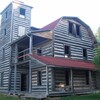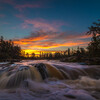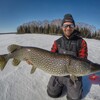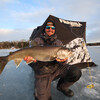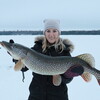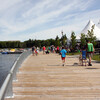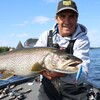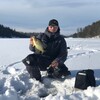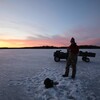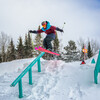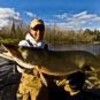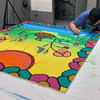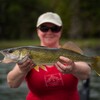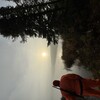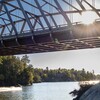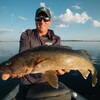James Lindner Teaches Jerkbait Tactics for More Success

Editors Note: James Lindner is a member of the United States Fishing Hall of Fame and son of In-Fisherman co-founder Ron Lindner. Starting out as a guide, James quickly became a key part of the family business. Now a regular host on Lindner's Angling Edge, James continues to teach the techniques of fishing to thousands of anglers and his commitment to education in fishing is unparalleled. In this exclusive article for NorthernOntario.travel, James gives you the low down on jerk baits and how to use them to catch more and bigger fish in Northwest Ontario.
Visitors to Northwest Ontario often target their favorite fish, matching their tactics to each species' haunts and habits. Pike and muskie anglers usually toss big baits around weeds and rocks. Walleye anglers tend to vertically fish jigs or live bait rigs along drop-offs to deep water. In summer, lake trout anglers troll extreme depths with spoons, while brook trout specialists cast small spinners and minnow baits into the shallows. Historically, these proven patterns work, year in and year out, and it's hard to argue with success.
On the other hand...many folks don't discriminate. They simply want to get bit, and to tangle with something big and powerful pulling on the end of their line. Wouldn't it be nice if you could use one lure and method, just about everywhere, to catch everything that swims? And never know in advance which species of fish might bite on your next cast? That's the kind of anticipation and thrill that makes fishing Northwest Ontario waters so spectacular. Particularly when the system is so easy that anyone can employ and enjoy it with great success.
The Jerk
In the old days, the term "jerkbait" meant large, heavy chunks of wood sprouting multiple oversized treble hooks. They were almost exclusively flung for muskies, although other species wrapped their jaws around their magnum profiles. Still do, in fact.
In modern parlance, the term "jerkbait" arises out of the bass market. It applies to long, thin minnow imitators that resemble Rapala's Original Minnow, a classic fish-catching profile that's been tearing up the fishing world for 50 years and more. But rather than incorporating a subtle, wiggling, high-flotation body, jerkbaits are instead molded from durable plastic, and internally weighted to be not too heavy, not too light, but just right. Their precisely-balanced design makes jerkbaits neutrally buoyant, meaning that when you pause your retrieve or stop pulling them through the water, they neither float back toward the surface, nor sink toward the bottom. They suspend in place, totally vulnerable before a fish's eyes, just begging to get whacked. This "hanging in suspense" characteristic totally infuriates following or hesitant fish into striking.
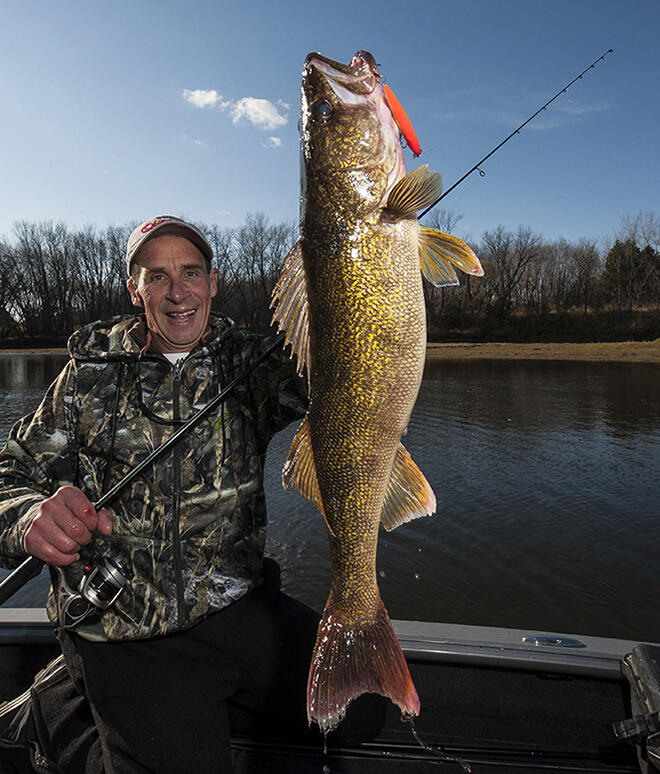
How to Work JerkBaits
There are great several ways to work jerks—all of them good, although sometimes, one method out-produces another. When the water's cold, like in late spring, we tend to use slower swims with occasional pumps of the rod tip, followed by extended pauses. This gives fish like smallmouths and walleyes time to evaluate their prey and move in for the kill. Modest-sized baits like Rapala's X-Rap 10 or 12—which are 4 and 4 ¾ inches long, respectively—are ideal. If we're targeting brook trout, we'd likely drop down to the smaller size 8. And for pike or muskies, bump up to a size 14, which is actually a larger saltwater bait that's ideal for catching big toothy critters in freshwater. And add a lightweight wire leader to deflect sharp teeth and bite-offs.
When the water's warm, like in summer, we pick up the pace, imparting a series of rapid, sharp jerks to the bait by repeatedly snapping the rod tip while simultaneously reeling up slack line. This makes the bait jump unpredictably up, down and side-to-side. But then, the key is...pausing...at least for a few seconds. The bait goes from hyperdrive to stall, again infuriating following fish into smashing it with a vengeance.
In each case, we match our tackle to the size of the lure and the species we're most likely to catch. Small- to modest-sized baits work best on spinning gear, typically with 8- to 10-pound test. Larger baits worker better on casting tackle and 14- to as much as 30-pound test line. Here's the deal, however. When the water's cold, we like to use monofilament line, which stretches a bit on every pump of the rod tip to reduce lure action a bit. Yet when the water's warm, we like to use no-stretch superline, which really makes baits shoot, jump and jive with extreme, unpredictable action. Yet in all cases, we still follow up our action sequence with a pause. The motion attracts, but the pause triggers strikes.
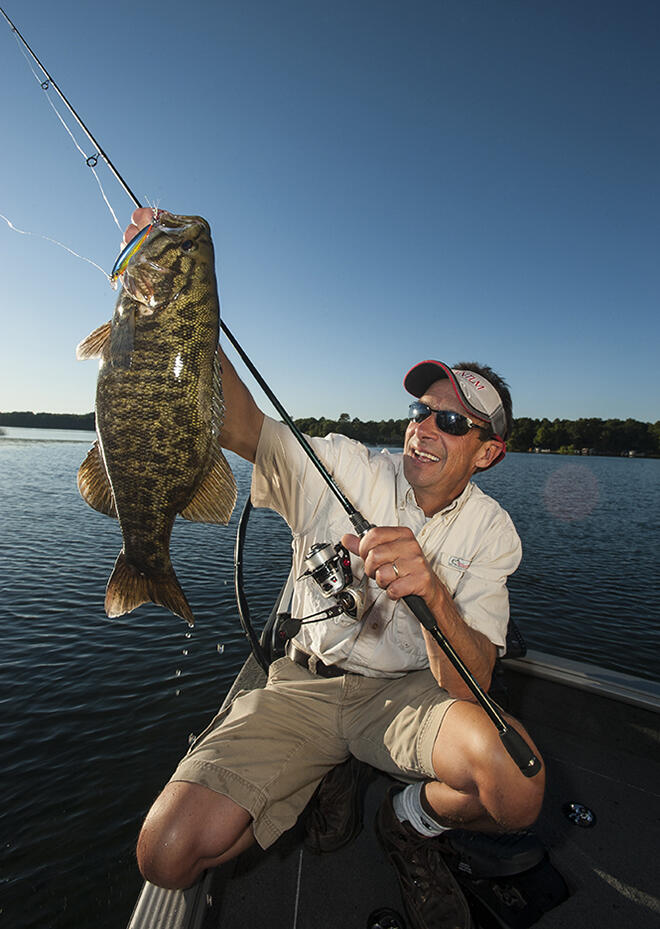
In clear water, we tend to use colors that mimic the local forage species, like whites or silvery patterns that imitate shiners or ciscoes, or perch patterns that resemble yellow perch. When the water's darker, we go with higher-visibility patterns like fire tiger or clown that are easier for fish to see. Good rules to follow...but all rules are meant to be broken.
Because sometimes, fish respond best to bright, wild color patterns, even in clear water. Smallmouth bass are classic examples. They simply love hot pink jerkbaits, and jump all over them at times while ignoring all others. Who can say why? Actually, it doesn't matter why—just that they do. Try it. It might be the solution to what you're after. Most of the time, you'll be targeting relatively shallow water with jerkbaits; most shallow runners dive about 3 to 4 feet deep, while some deep divers dip down to maybe 8 feet on the retrieve. The key is to fish spots where actively feeding fish are attracted to or collect in shallow water. In spring, shallow bays and river mouths are prime targets. In summer, windblown points, main-lake weed beds and shallow rocky sunken islands are superb. So are areas where current funnels between islands. Currents draw baitfish, which draw predators, which should draw...you!
In the end, jerkbaits aren't magic baits, although they certainly seem like them at times. If you're headed to Sunset Country in Northwest Ontario, don't leave home without a selection. Put a jerk on the end of you're line, and something's going to jerk back. Guaranteed!
Editor's Note: Make sure you get a free Fishing Guide and Map for Sunset Country in Northwest Ontario
Recommended Articles

Is the 1,400 Kilometre Drive to Northwest Ontario For a Fishing Trip Worth it?
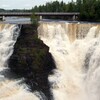
8 must-see waterfalls

6 Ways to Get Your 10,000 Steps This Fall

Top 5 Reasons You Should Be Fishing in Morson, Ontario

Discover The Winnipeg River

Enjoy Sunset Country's Fall Colours on Your Next Road Trip

Fishing in the Fall?

6 Reasons to Book a Fall Vacation to Sunset Country

10 Reasons to Avoid Ontario’s Sunset Country

Heading Across Canada?

A Guide to Sunset Country Museums
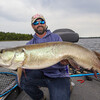
The Promised Land: Best Muskie Fishing in Ontario

Fall Fishing Tips
5 Essential Boreal Experiences in Ontario's Sunset Country

5 Obscure Facts About Northwestern Ontario: Were You Aware of These?
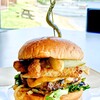
Great Food in Relatively Unknown Places
Outdoor Medicine

A Guide to Bringing Your Pets on Vacation to Canada

There's more than just fishing in the Red Lake Region

5 Amazing Sights You Can Only See By Boat

Going Fishing in Canada?

Going fishing in Ontario?

Outdoor Adventure in Ontario's Northern Paradise
Planning A Family Fishing Trip to Canada

Tips from a Fishing Legend

